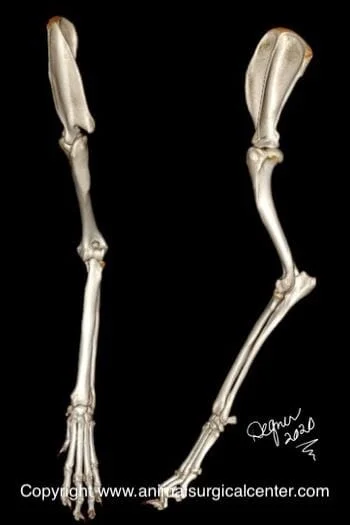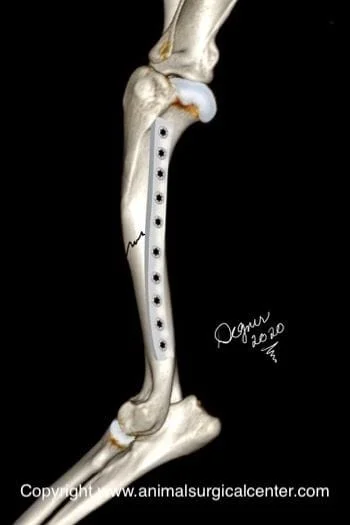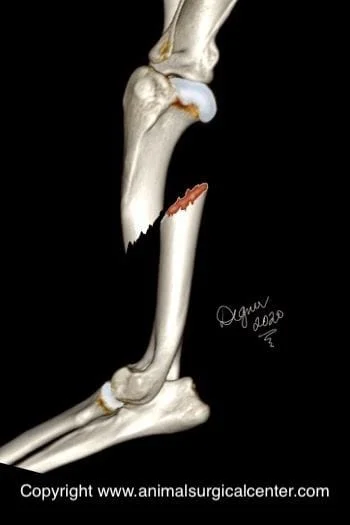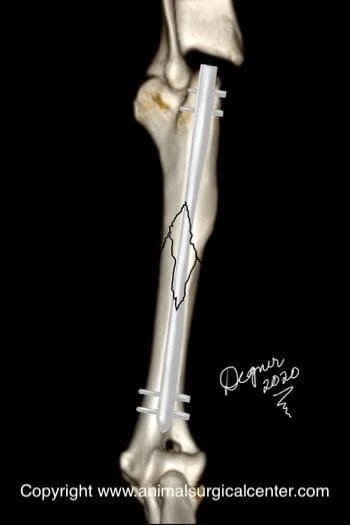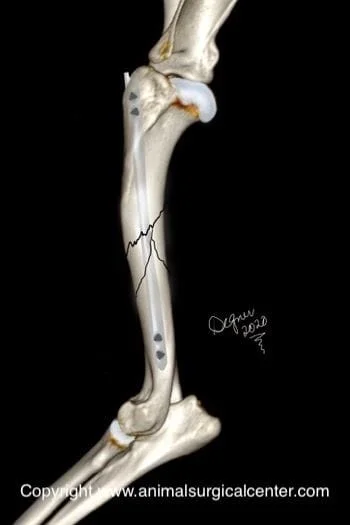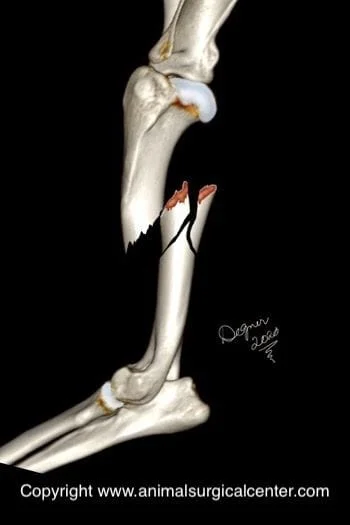Key Points
Humeral shaft fractures generally occur with significant trauma
Surgical repair of these fractures is ideal
After bone healing is complete, the prognosis is good
Initial visit- downloadable forms/information for clients:
History sheet - Client initial consultation history
Client education handout - humeral shaft fractures
Discharge instructions for postop care - dog
Discharge instructions for postop care - cat
2-week recheck visit - downloadable forms/information for clients:
History form - 2 week postop (Telemedicine evaluation) - dog and cat
Postop care instructions 2-week fracture repair recheck - cat
Postop care instructions 2-week fracture repair recheck -dog
8-week recheck visit - downloadable forms/information for clients:
History form 8-week fracture recheck (in hospital) - dog and cat
Postop care instructions 8 week fracture recheck - dog
Postop care instructions 8 week fracture recheck - cat
Downloadable forms for referring veterinarians:
Anatomy
The humerus connects with other bones to form the elbow and the shoulder joints. The radial nerve is critical for normal function of the forelimb and wraps around the humerus bone above and can be damaged during the accident.
Cause of fracture
Because the humerus bone is well protected by thick surround muscles, generally a fracture of this bone requires substantial trauma, such as being hit by a car. Gun shot injuries not only will fracture the bone, but also will result in a dirty open wound. This could potentially result in infection and delayed healing of the bone. Also, if the fractured bone is sharp it may penetrate through the skin and result in infection of the bone. If the pet sustains a fracture without any known trauma, there may an underlying disease that has weakened the bone such as nutritional deficiencies. Foods that have too much phosphorus and too little calcium or too much vitamin A will make the bones weak. Some animals have an inherited collagen defect that weakens the bones, resulting in bone fractures with minimal trauma. Bone cancer also can weaken the bone and predispose the pet to a spontaneous fracture.

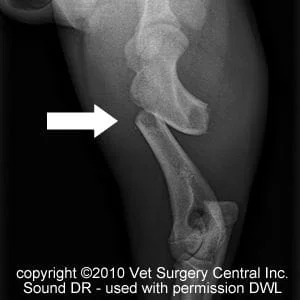
Surgery
For most fractures of the humerus bone, a bone plate and series of screws are used to stabilize the fracture. This treatment results in the least aftercare for the client and has an excellent chance for a successful outcome.
If the fracture is caused by a gunshot or other trauma that results in an open wound over the fracture site, an external fixator may be the treatment of choice. Also, if the bone is fractured in multiple small pieces the best treatment may be an external skeletal fixator. This apparatus consists of multiple pins that penetrate the skin and bone and are connected to external bars that run parallel to the bone. An older technique to repair a humeral fracture involves placement of a single pin into the marrow cavity of the bone and use of wires that are wrapped around the bone. This method of repair is only used in certain types of humeral fractures. The use of a cast as the sole treatment for humeral fractures commonly results in a nonhealing fracture or malalignment of the bone (bent bone).
A new method to treat humeral fractures is an interlocking nail, called the I-loc. This is an excellent method to repair humeral shaft fractures , especially when there are multiple fractures in the shaft with multiple bone fragments. This method is associated with minimal complications and excellent bone healing in most cases.
Af
Aftercare
After surgery, you can continue to give your pet a prescribed pain reliever to minimize discomfort. It’s also extremely important to limit your dog’s activity and exercise level during the post-operative period. Detailed instructions will be given to you after the surgery. The surgeon will monitor the healing process with at least two follow-up exams. The first is scheduled at two weeks after the surgery. During the second exam, at five to eight weeks after the surgery (depending on the age of the dog), radiographs will be made to evaluate the healing bone.
Prognosis
Surgical repair of a fractured humerus bone with a plate and screws or external skeletal fixator offers multiple benefits including a faster recovery, earlier use of the limb after surgery, better chance to return to athletic activity, less risk of a second surgery being required, and better range of motion of the joints above and below the fracture. Uncommon complications include infection, nonhealing of the fractures, breakage of the metal plate, osteoporosis of the bone, bone cancer induce by metal implants, cold sensitivity and fracture of the bone.


